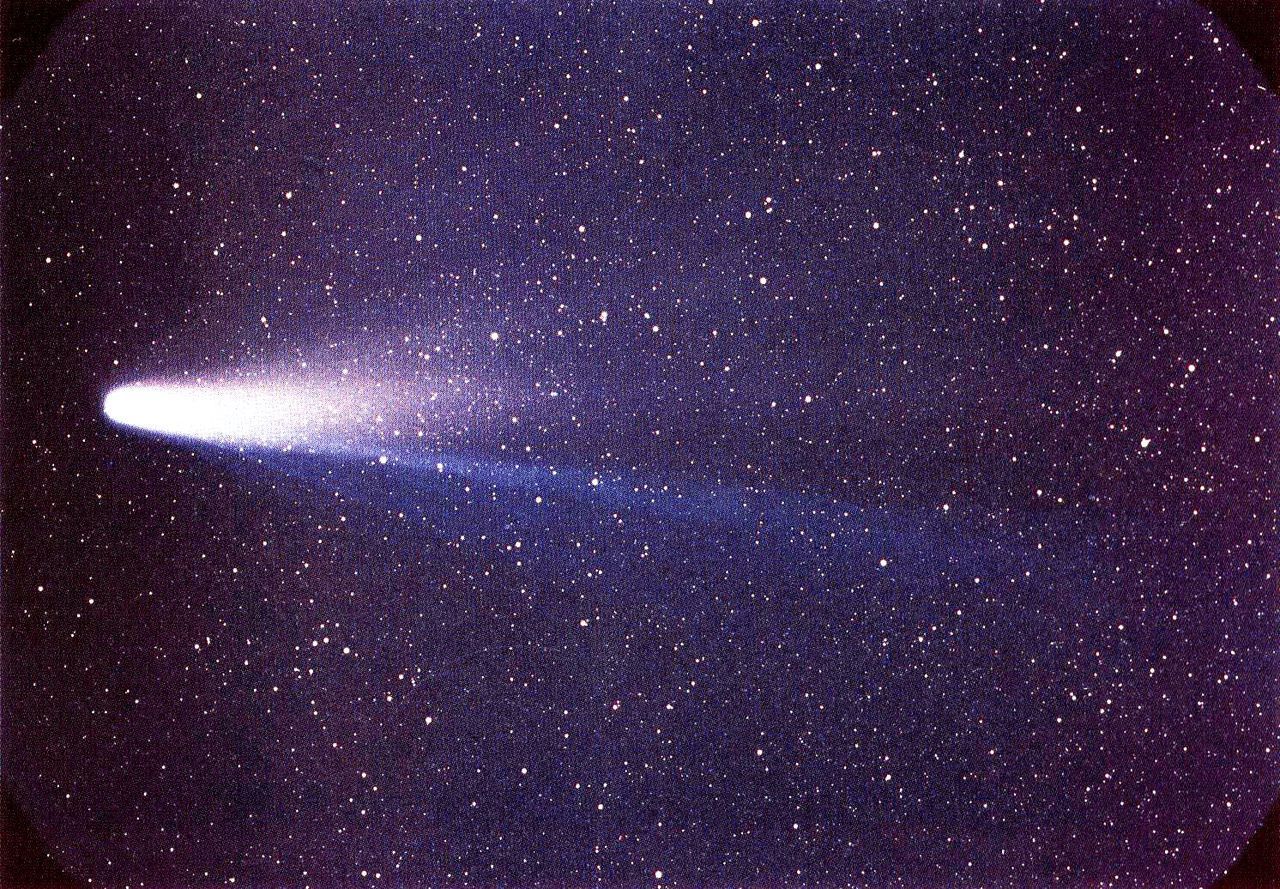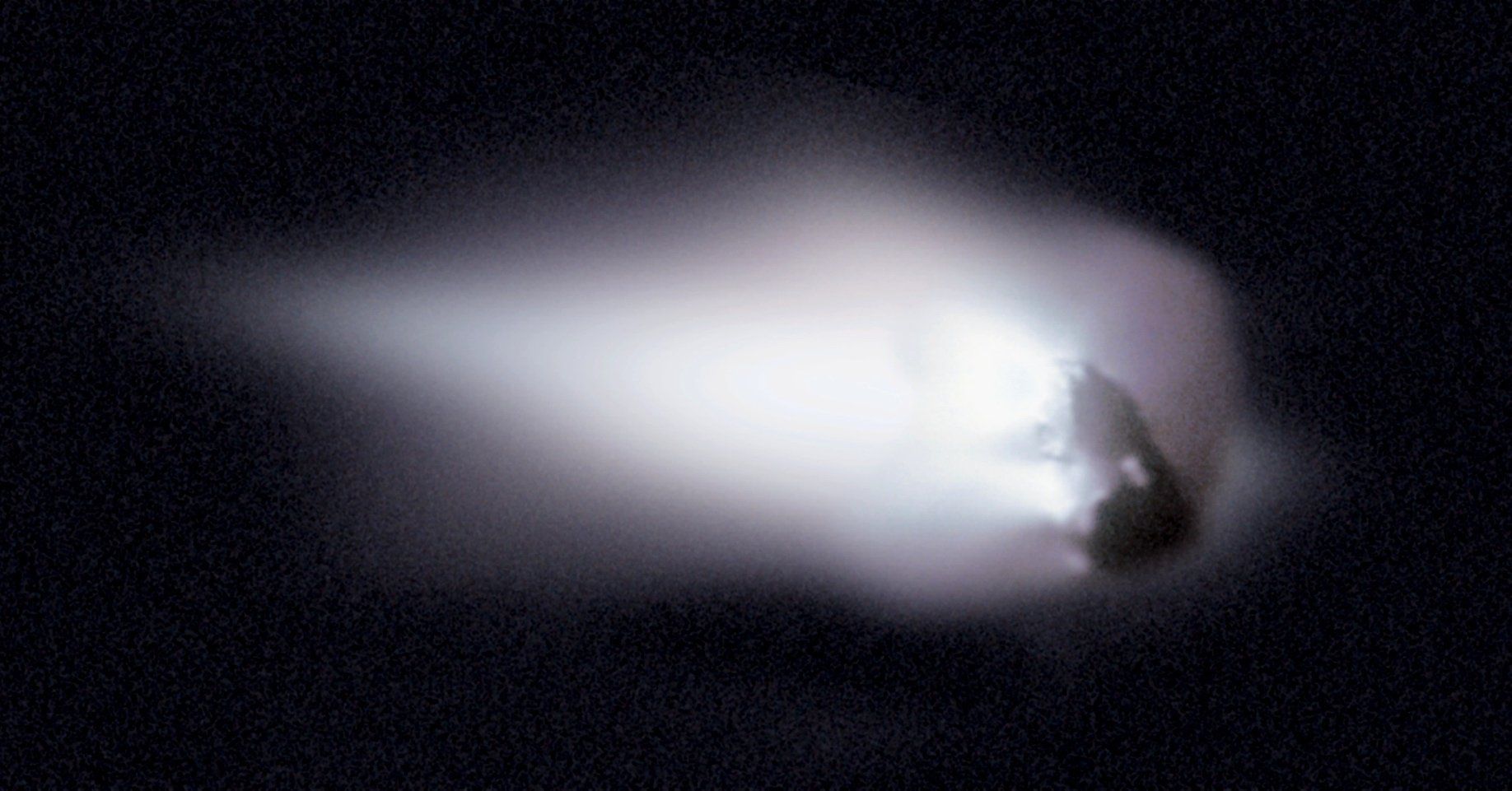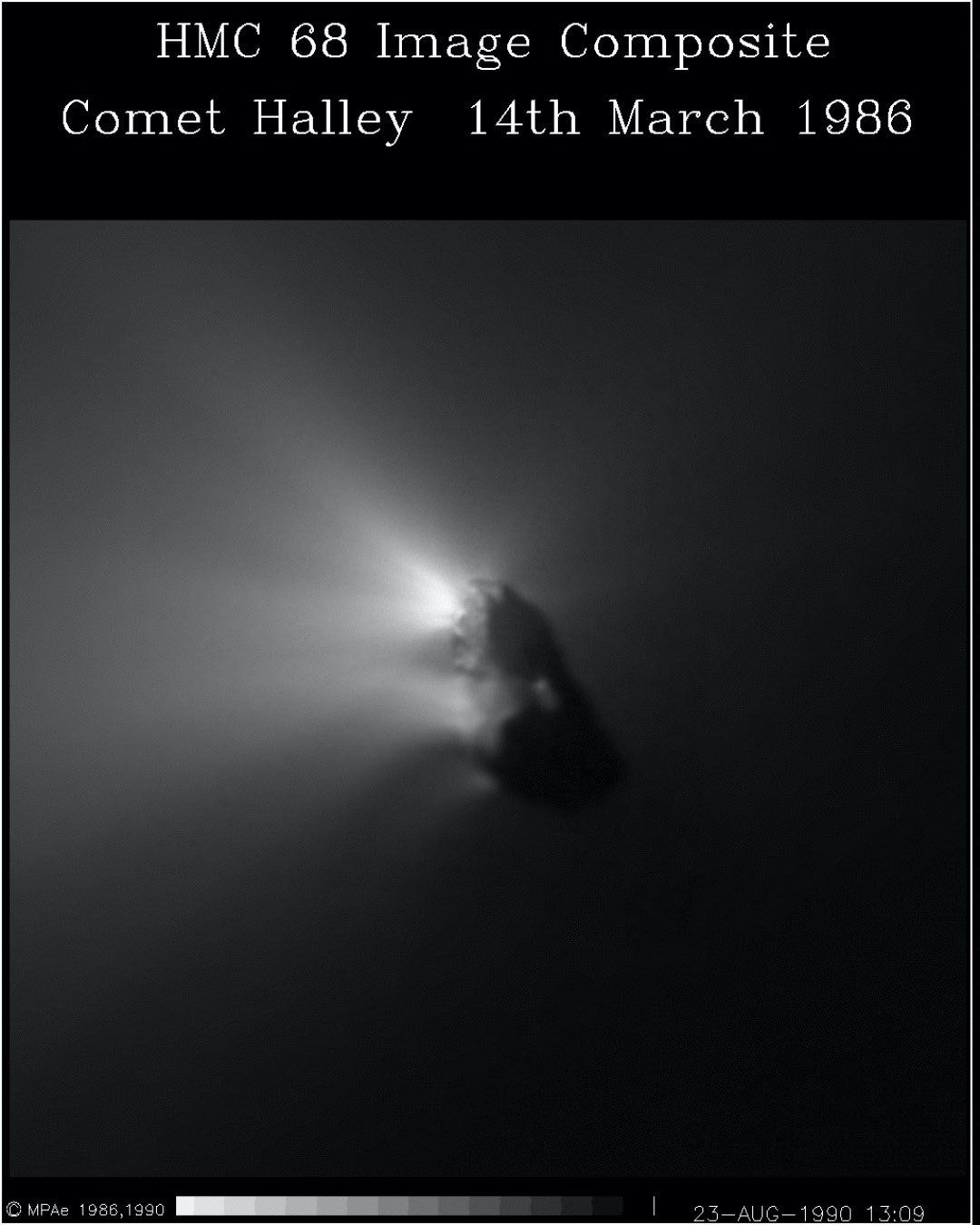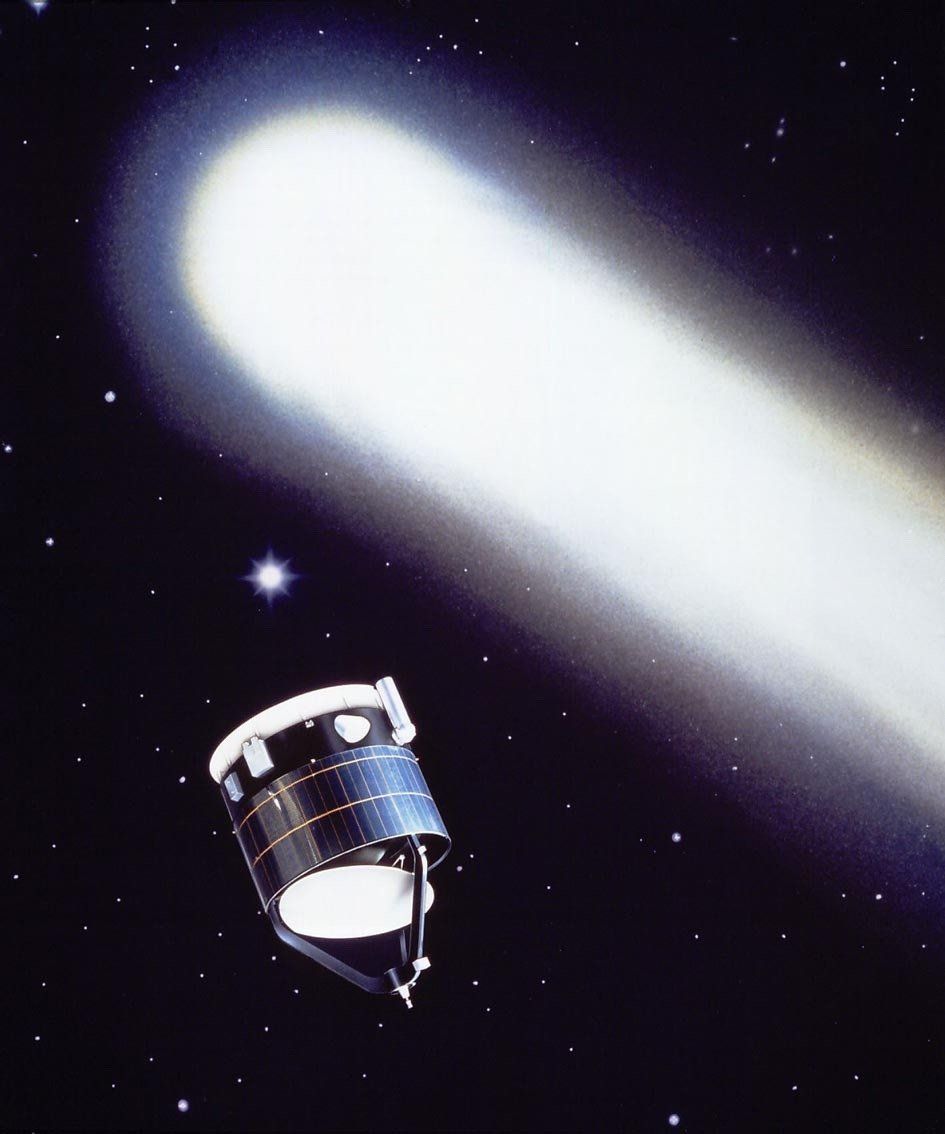This web page is created within BALTICS project funded from the European Union’s Horizon2020 Research and Innovation Programme under grant agreement No.692257.
Halley’s Comet
Probably the most famous comet is Halley’s Comet, one of the longest observed in human history. The first records of this “tail star’s” visit to Earth were made in the year 240 BC. This comet has been observed and documented by scientists in ancient China, Babylon and the Middle Ages. At that time, there was no idea that it was the same comet. Both Halley’s Comet and other sudden phenomena were commonly associated with disasters, disease outbreaks, and nationwide failures.
The English astronomer Edmund Halley was the first to determine the periodicity of a comet in 1705 and to calculate its next appearance. Using Newton’s laws, he calculated the orbital parameters of the comet observed in 1682 and, examining the history’s records, concluded that they were remarkably similar to the comets observed in 1607 and 1531. Halley decided it was the same comet returning every 76 years. He determined that the next comet would be observed in 1758. The scientist died in 1742 and did not know if his calculations were correct.
With a slight shift due to the gravity of Saturn and Jupiter, the Halley’s Comet returned at the predicted time. Johann Palitzsch, a hobby astronomer and farmer from Germany, was the first to notice it on December 25, 1758. This was the first time that it was proven that more than just planets revolved around the Sun. In honor of Halley, this short-lived comet was named in 1759.
Halley’s Comet’s period ranges from 74 to 79 years. It is characterized by a stretched elliptical orbit. The closest point to the Sun, or perihelion, is only 0.6 astronomical units away from the Sun, and the furthest beyond Neptune is 35 astronomical units. It orbits opposite planets, or clockwise, if we look at the Solar system from above, above the North Pole of the Sun. The orbit is at an angle of 18o relative to the ecliptic plane. The last time the comet reached perihelia, or the point near the orbit of the Sun, was in 1986, and the next time is expected in 2061.
The Halley’s Comet approaches the Earth’s orbit in two places and is associated with two meteor showers – the Eta Aquariids in early May and the Orionids in the second half of October. The Halley’s Comet is considered to be the source of the Orionids’ shower, but the Eta Aquariids are not unambiguously associated with the dust left by the comet itself. It is possible that the Halley’s Comet has simply influenced the dust left by another comet.
There is also no consensus on the original origin of the Halley’s Comet. There is a version that it was once a comet of a long period, the orbit of which has been significantly changed by the big planets. In another case, it is hypothesized that the source of the Halley’s Comet is the Kuiper belt.
Because the nucleus of Halley’s Comet is several tens of kilometers long, mathematical models suggest that its lifespan could be millions of years. However, the effects of both the Sun and the large planets must be taken into account, as a result of which the comet can be shattered. There are scenarios that predict that in a few hundred thousand years, Halley’s Comet could be ejected from the Solar system.
The nucleus of the Halley’s Comet is an irregularly shaped object about 8 to 15 km in diameter. The mixture of gases emitted from the core consists mainly of water vapor with impurities of carbon monoxide and carbon dioxide, as well as very small amounts of methane and ammonia.
An initial analysis of Halley’s Comet water indicated that it was similar to that found in the Earth’s oceans, but subsequent studies revealed that the ratio of deuterium to normal hydrogen differed from that found in the Earth’s oceans.
Halley’s Comet is the first to be observed using various spacecraft. In 1986, the comet was photographed and analyzed by probes from different countries – USSR Vega 1 and 2, European Space Agency Giotto, etc. Unofficially, this spacecraft fleet was called Halley’s Armada. In addition to direct observations from space, the comet was studied with various Earth telescopes. At that time, the first images of the comet’s nucleus were obtained, the activity of the gas discharge was observed, and the chemical composition of the dust particles flowing away from the comet and the chemical composition of the comet were analyzed.























